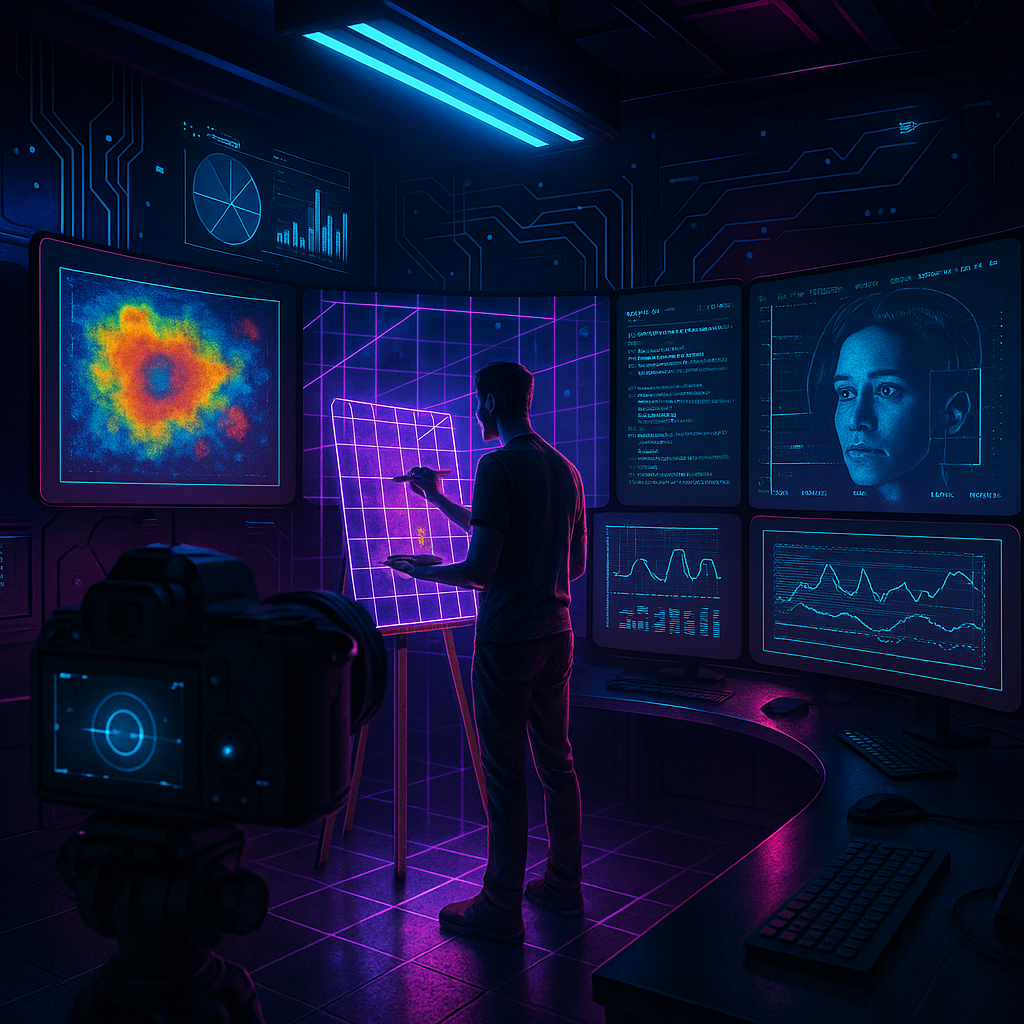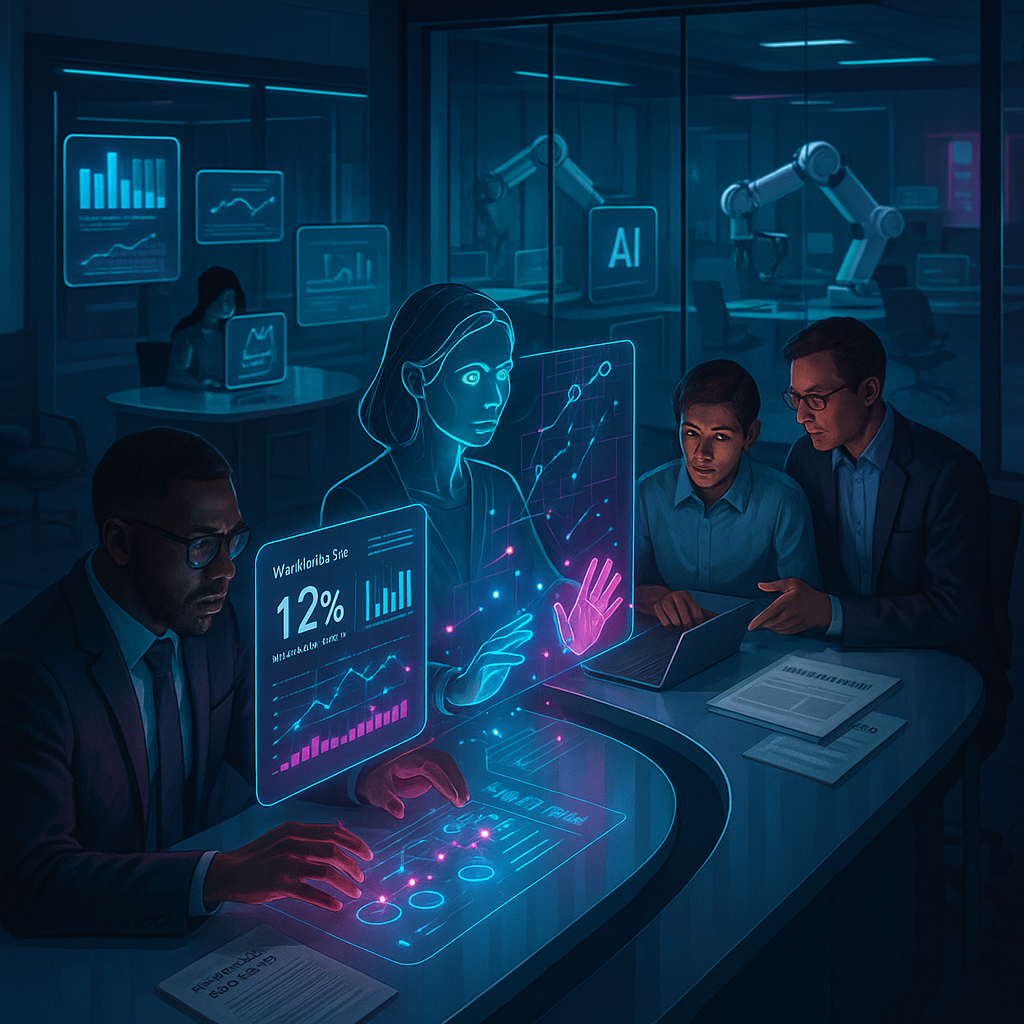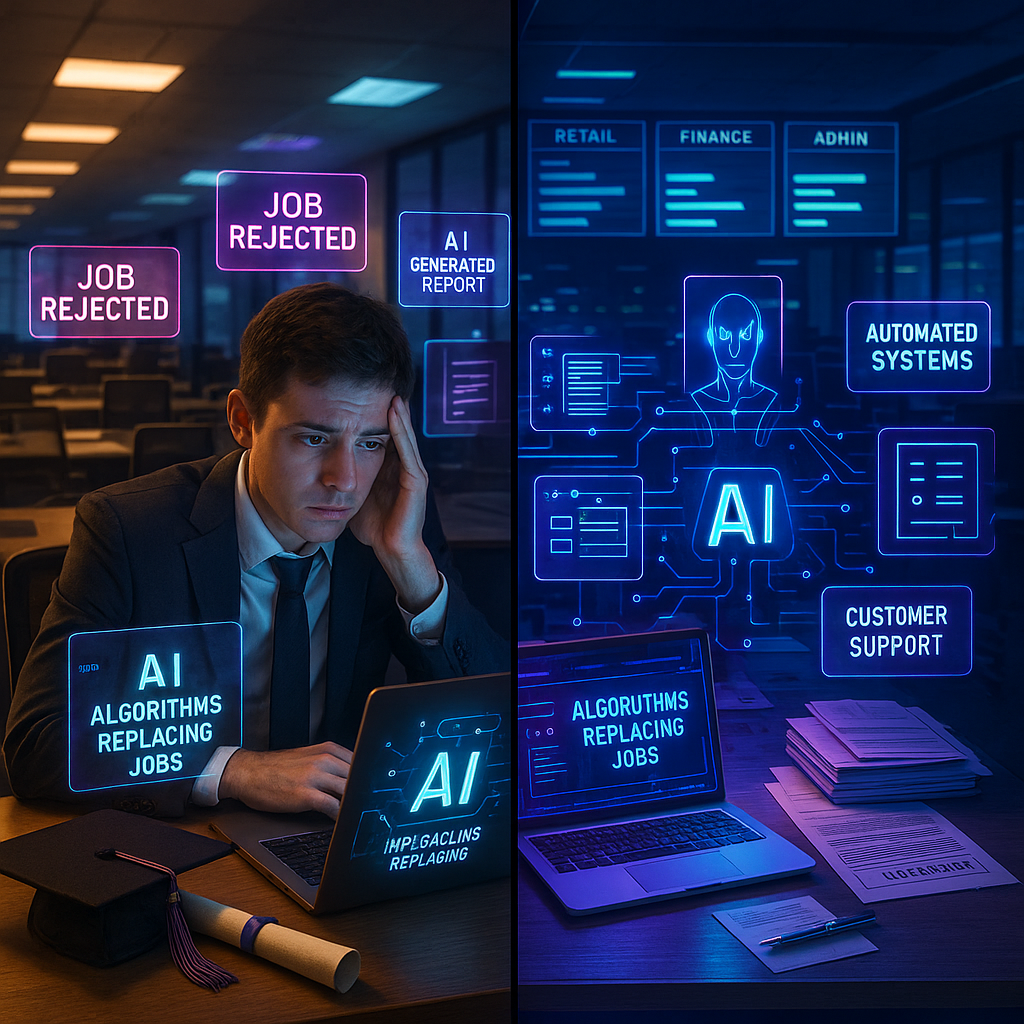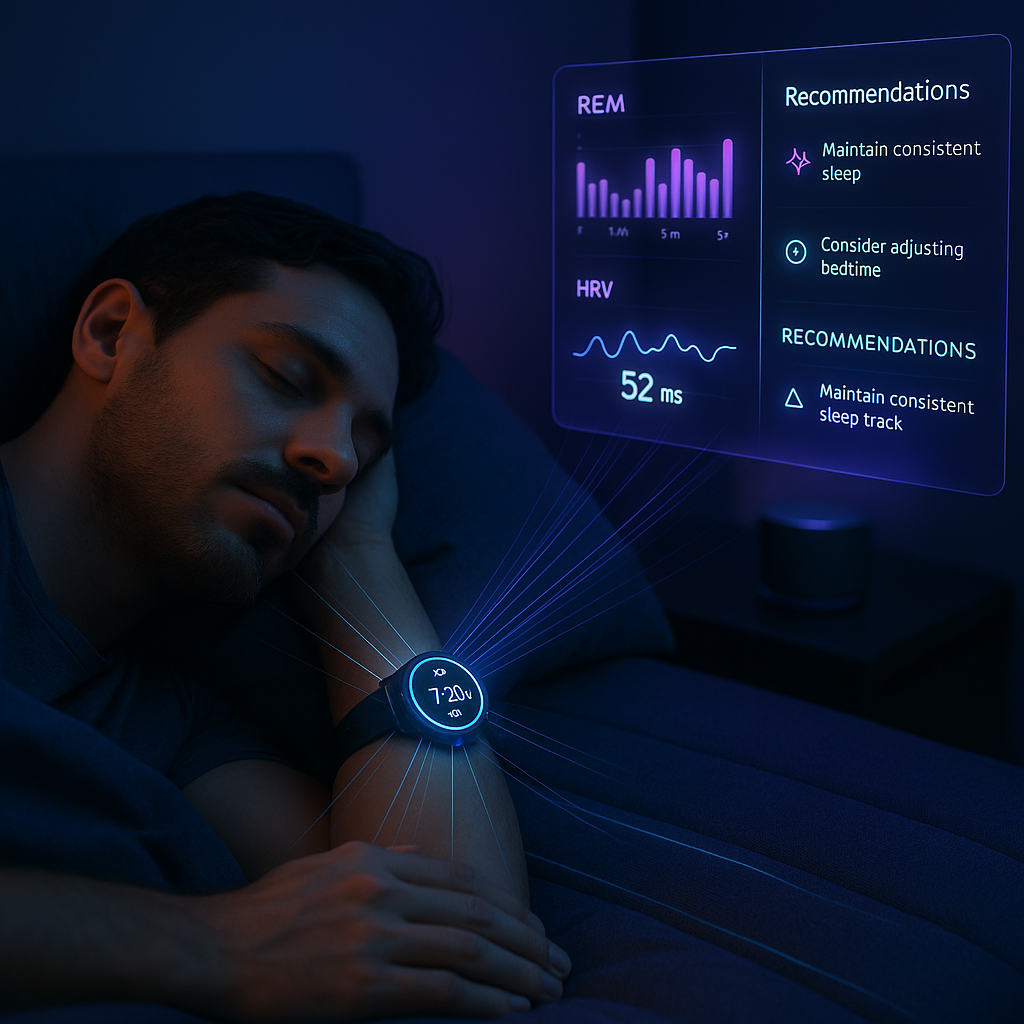Key Takeaways
- Machine gaze transforms the observer’s power: With artificial intelligence operating as both audience and analyst, the act of observing shifts from a uniquely human privilege to a computational capability. Algorithms now parse our every move and fundamentally alter the dynamic between creator and observer at every level.
- Authorship becomes a shifting mosaic: AI dissolves the once-clear boundaries between artist, audience, and subject. This raises provocative questions of ownership, originality, and creative credit in an era characterized by relentless algorithmic remixing and collaboration.
- Reverse surveillance flips traditional roles: As AI-powered “reverse surveillance” grows, creators become as closely monitored as the subjects they portray. The boundary between observing and being observed grows ever more porous, challenging long-standing assumptions about creative agency.
- AI observation generates novel aesthetic forms: Converting human intention and expression into streams of data, the machine gaze births entirely new genres, hybrid authorships, and artistic forms once unimaginable in purely human creative contexts.
- Cultural agency is redistributed, sometimes invisibly: With AI acting as an unseen collaborator, subtle algorithmic edits and biases shape not only artworks but cultural narratives themselves. This challenges not just the agency of artists, but also that of audiences, who encounter works filtered through unseen computational lenses.
- Philosophical questions come sharply into focus: The ascent of machine gaze provokes deeper inquiry. Is observation itself an act of creation? What does it mean for creativity, privacy, and the construction of selfhood, when we are witnessed by both humans and non-human intelligences?
The age of AI observation compels us to revisit fundamental questions about creation, witnessing, and identity. The exploration that follows delves into these intricate ideas and sheds light on the creative landscape now shaped in equal measure by human vision and the algorithmic gaze.
Introduction
When machines learn to watch, the creative process itself is irrevocably transformed. AI observation (often referred to as the “machine gaze”) encompasses far more than passive surveillance. It deciphers patterns in art, language, and behavior with an algorithmic rigor that challenges our deepest assumptions about authorship, originality, and agency.
As advanced algorithms track, interpret, and remix human intention, both creators and audiences find themselves simultaneously observers and the observed, locked in a continuous dance of influence and interpretation. The rapid rise of reverse surveillance and omnipresent machine gaze compels us to interrogate: who truly owns the power to witness, to judge, and to determine the meaning of our collective culture? As we move forward, it becomes critical to understand how AI is not just rewriting the rules of authorship, but also redefining the essence of creativity, privacy, and human agency in an increasingly digital age.
The Rise of Machine Gaze in the Creative Landscape
The proliferation of machine gaze signals a categorical shift in the way creative works are seen, analyzed, and valued. Human observation, rich with context and emotional resonance, differs profoundly from algorithmic observation, which relies on vast datasets, pattern recognition, and statistical reasoning. This contrast introduces the era of computational seeing. It’s a new paradigm where creativity is filtered and evaluated at a massive, mechanical scale.
Stay Sharp. Stay Ahead.
Join our Telegram Channel for exclusive content, real insights,
engage with us and other members and get access to
insider updates, early news and top insights.
 Join the Channel
Join the Channel
Across disciplines, we see evidence of this shift. Generative Adversarial Networks (GANs) in visual art present a direct illustration: here, the “discriminator” algorithm judges the outputs of the “generator,” imposing artificial standards of authenticity and creativity. In projects like Mario Klingemann’s “Memories of Passersby I,” we encounter portraits conjured by neural networks—uncanny faces that exist in a liminal space shaped by both human and algorithmic influence.
Beyond the art world, the machine gaze is embedded in daily life. Streaming services like Spotify utilize sophisticated recommendation engines that construct personalized playlists by analyzing technical attributes of music, such as tempo or key, frequently at the expense of cultural context or emotional depth. Social media feeds on platforms such as Instagram and TikTok are similarly moderated by algorithms that evaluate, promote, and suppress content based on engagement metrics, subtly influencing both creators and consumers.
When considering healthcare, AI-driven diagnostic imaging systems act as a second, tireless set of eyes, highlighting anomalies physicians might miss. In finance, algorithmic trading platforms observe market behaviors at blazing speeds, shaping not just individual transactions but the dynamics of entire economies.
Through these examples, it becomes clear that the machine gaze is not a passive witness. It has become an active force, increasingly shaping the conditions and criteria of human creative expression and decision-making.
Pattern Recognition vs. Contextual Understanding
The strength of machine perception lies in its ability to identify recurring patterns, extract structures, and process massive volumes of data with impartial precision. However, this capacity stands in contrast to human cognition, which imbues observations with context, empathy, and cultural significance.
For instance, algorithms excel at detecting patterns in visual art—repeating motifs, color schemes, or brushstroke styles—yet often fail to discern the subtleties of cultural symbolism or personal narrative embedded in a painting. In the realm of music, an AI might cluster songs together based on rhythm and timbre, while missing the nuanced emotional journey that connects a listener to a particular artist or genre.
This distinction manifests across sectors. In legal technology, AI systems review contracts to identify risky clauses, yet struggle to appreciate nuanced intent or jurisdictional particularities. In marketing, predictive analytics can forecast consumer behavior based on clicks and demographic data, but may misread fleeting cultural trends or shifts in sentiment.
As theorist Lev Manovich described in his work on “cultural analytics,” creative decisions are increasingly informed by algorithmic interpretations of success and resonance. Quantitative measures—likes, shares, comments—begin to influence the direction of creativity itself, reinforcing patterns that align with algorithmic optimization, sometimes at the cost of innovation or emotional impact.
Redefining Authorship in the Age of AI
If the notion of singular authorship was already under pressure from postmodern and collaborative theories, AI pushes it further into ambiguity. We enter the era of mosaic authorship, where creative output emerges from intricate interplay between human agency and algorithmic suggestion.
Collaboration with AI complicates the fundamental question: who (or what) should be credited as the originator of a creative work? The collaborations of AICAN with human artists, resulting in works that have been auctioned at Christie’s, spotlight the challenge. These works are born of dialogue between programmed intelligence and artistic intent, inviting debate around ownership, legal rights, and the definition of creativity.
Music production offers another vivid example. OpenAI’s MuseNet can generate symphonic compositions synthesizing the styles of multiple historical composers. When a human guides the process but the AI fills in the details, the resulting pieces occupy a hazy domain between homage, co-creation, and pastiche. Similar tensions are emerging in the news industry, where AI-generated articles coexist with journalism, and in education, where generative models produce customized lesson plans alongside teachers.
In healthcare, AI-powered systems now co-author diagnostic reports, blending human expertise with machine-derived suggestions. In environmental science, scientists use AI simulations to model climate patterns, with papers resulting from human insights informed by algorithmic predictions.
Through these manifold collaborations, the concept of authorship evolves from individual genius to multifaceted network. It’s a mosaic continually reassembled through the interplay of human and machine voices.
Reverse Surveillance and the New Dynamics of Witnessing
The phenomena of reverse surveillance introduce renewed complexity to creative agency. Where once artists gazed out upon the world, now platforms, audiences, and algorithms gaze relentlessly back. Creators are algorithmically surveilled in real time, their every choice measured, scored, and archived.
On platforms such as TikTok, YouTube, and Instagram, creative production is shaped not only for human spectators, but for the invisible algorithms that determine visibility, virality, and economic success. Researcher Alice E. Marwick aptly terms this state “algorithmic anxiety,” a psychological feedback loop in which creators adapt their styles, formats, and topics based on perceived algorithmic preferences.
Empirical studies reinforce this trend. For example, YouTube creators have reported a 43% increase in algorithm-driven conformity over just two years, with their decisions on thumbnail design, video pacing, and subject matter increasingly attuned to platform feedback. In e-commerce, sellers adjust product photos and descriptions to cater to search engine and platform ranking criteria. In education, instructors shape curriculum delivery to better match adaptive learning platforms’ success metrics.
Stay Sharp. Stay Ahead.
Join our Telegram Channel for exclusive content, real insights,
engage with us and other members and get access to
insider updates, early news and top insights.
 Join the Channel
Join the Channel
Beyond the creative industries, similar dynamics emerge in areas like healthcare, where doctors adjust documentation and patient interaction styles to optimize for AI-driven recordkeeping systems.
This era of reverse surveillance inverts traditional power relationships. Creators now serve not only audiences, but also the algorithmic systems that filter and shape those audiences. They must balance the pursuit of authentic expression against the demands of digital visibility and commercial survival.
New Aesthetic and Cultural Forms from AI Observation
Machine gaze is not merely an analytical tool; it is also a generative force driving the emergence of entirely new aesthetic categories and creative modalities. This has given rise to what visionary artist James Bridle has called the “New Aesthetic.” These are creations that consciously engage and reflect the influence, possibilities, and limitations of algorithmic observation.
Visual artists like Trevor Paglen produce “adversarial” works that probe and sometimes confound machine vision systems. His “Adversarially Evolved Hallucinations” project, for instance, produces images that are readable to artificial vision but appear enigmatic or abstract to humans, exposing the divergent logics underpinning different types of perception.
In literature, some authors now craft texts to maximize visibility within recommendation engines or to experiment with generative writing prompts provided by language models like GPT-4. Theorist N. Katherine Hayles describes the emergence of “electronic literature,” narratives designed in tandem with, and sometimes for, machine readers as much as for human audiences. In marketing, data-driven campaigns are creatively constructed with machine audience segmentation in mind, designing advertisements that appeal to both algorithms and people.
Meanwhile, AI-curated exhibitions and concerts point toward a future in which cultural curation and consumption themselves are becoming algorithmically mediated. In environmental science, generative models construct speculative visualizations of climate outcomes, blending artistic sensibility with data-driven insight.
These developments suggest that AI’s machine gaze is driving an accelerating evolution in cultural forms, a continuous interplay of human invention and algorithmic mediation that births hybrid genres, audiences, and experiences.
Conclusion
The expansion of machine gaze into the creative sphere is more than a technical milestone. It is a profound reordering of agency, value, and meaning across all facets of cultural life. Algorithms have moved beyond observation, taking their place as collaborators, arbiters, and even originators inside our most human domains.
As the distinctions between observer and observed, creator and audience, blur under the influence of algorithmic vision, we find ourselves inhabiting a creative environment that is part human, part computational. It’s a dynamic territory where authorship is collective, authenticity is layered, and aesthetic value is co-constructed.
This transformation does not simply raise questions about who gets credit or how works are valued. It compels us to reimagine the foundations of creativity, privacy, and cultural agency itself. In sectors as diverse as healthcare, education, finance, and the arts, algorithmic witnessing is reshaping how we see, how we are seen, and how we understand our place in the world.
Looking ahead, the imperative for creators, thinkers, and cultural participants is to reclaim and redefine agency in the age of the machine gaze. Success will belong to those who can harness this new partnership between alien logic and human vision, using it not only to amplify creativity, but to challenge systems that obscure or distort meaning. The real challenge is no longer whether to adapt to the presence of AI. Instead, we must ask how to actively shape its gaze, crafting a future where observation itself becomes a site for ingenuity, dialogue, and the flourishing of human and non-human minds alike.





Leave a Reply